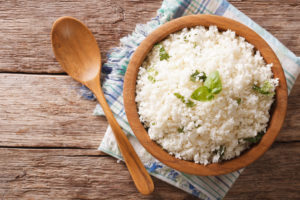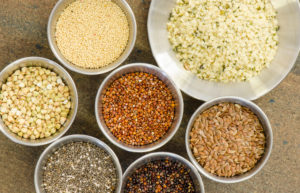 A couple of weeks ago, I watched the BBC programme Trust Me I’m a Doctor and in this episode there was a section about arsenic in rice.
A couple of weeks ago, I watched the BBC programme Trust Me I’m a Doctor and in this episode there was a section about arsenic in rice.
As a Nutritional Therapist, I have always been aware of the presence of inorganic arsenic in rice but until watching this TV programme I hadn’t been overly concerned. I hadn’t been overly concerned because I considered the amount of rice and rice products that we generally eat was within safe limits.
However, this programme and in particular the experts comment had me incredibly concerned because of this:
“I wouldn’t give my children rice or rice products”
OMG!!!! This was my reaction because as a Mum and a Nutritionist I do give my children rice products and when they were babies, I used a lot of rice cakes and even rice milk!
So, armed with this information, I have spent the last few days researching this topic so I can give you a definitive guide to rice and whether it is in fact safe or not!
I can tell you that I’ve had to really change my views on rice products.
What is inorganic arsenic?
Arsenic is a toxic but naturally occurring trace element.
There are two types:
- Organic found in plants and animals
- Inorganic found in rock and soil
The inorganic form is water soluble and this is one of the reasons why it causes such an issue with rice. Rice is grown in paddy fields which is basically a flooded field. The arsenic can easily accumulate in this water soaked fields and then be taken up by the growing rice.
Arsenic is classed as a as a category 1 carcinogen by the European Union, which means that it’s known to cause cancer in humans.
Are arsenic levels rising?
Arsenic levels have been rising due to pollution, industrial waste and the use of herbicides and pesticides.
Since arsenic is water soluble it ends up in the ground water, rivers, sea and even our drinking water.
Unfortunately, rice absorbs more arsenic from water and soil when to compared to other crop types.
Is it safe to eat rice and rice products?
It is quite clear that arsenic in rice is a huge cause for concern, especially for those who rely on this as a staple part of their diet. In the UK, we haven’t been too concerned because our intake has in the past been low and therefore safe. However, with the rise in rice and particularly rice product consumption we do need to be careful.
The European Commission introduced maximum limits for arsenic in rice and rice products which came in to effect on 1st January 2016. This includes strict limits for products aimed at babies and children.
However, there is still concern that these limits are too high and will not be fully regulated.
The FSA has also known about this issue for a number of years and yet this has failed to filter down to the people who need to know this i.e. Nutritionist’s, Health Visitors & Paediatricians.
The most vulnerable
Other than those in countries where rice is consumed every day, we also need to be careful with babies, children, those on gluten free diets and anyone with a compromised detoxification system i.e. liver, bowel & kidney issues.
Should I stop eating rice?
Rice is a great source of nutrition so just avoiding it is not the simple answer. Keeping within safe limits as part of a varied and balanced diet is definitely the way to go. There are also some tips to reduce the amount of arsenic when selecting and cooking rice and rice products.
- Brown rice contains the most arsenic due to the husk (the bit that also has the most nutrition)
- White basmati appears to have the least amount of arsenic.
- Organic rice has levels comparable to on organic rice.
- Rice cakes, crackers & puffed rice cereal contain much higher levels than cooked rice.
- Rice milk contains the highest concentration of arsenic.
- Brown rice syrup often used as a sweetener may also contain high levels of arsenic.
What can you do?
Children under 5 years: avoid rice milk & brown rice syrup, limit rice cakes & cereal (see below) and cook rice as detailed below.
Children over 5 years & adults: use rice milk & brown rice syrup sparingly, limit rice cakes and cereal (see below) and cook rice as detailed below.
The best way to reduce arsenic in rice is to soak it over night in water, rinse in fresh water and then cook in 5 times the amount of water, strain and rinse before serving. This reduces the arsenic to almost negligible levels.
The worst way to cook rice is where all the water is absorbed i.e. a rice cooker.
Safe daily amounts
- Adults: 100g rice & 7 large rice cakes
- Children over 5 year: 30g rice & 2 large rice cakes
- Children under 5 years: 20g rice & 1 large rice cake
The Final Word
I love rice and so I am not about to give it up. I’m also not going to swap my brown rice (full of nutrition) for white. I am going to cook my rice as per the recommendations. I will not be using rice milk anytime soon but I will still have the odd rice cake.
Please be aware that there are other grains available that do not have this problem. Grain such as millet, quinoa, amaranth etc. Those who follow a gluten free diet should be particularly careful to diversify in their use of grains.
Remember also that your body is capable of clearing toxic substances when you support your detoxification pathways. By eating a healthy, well varied and balance diet you give your body the best chance to function at its full potential. Be careful with foods and drinks that stress the liver. Drink plenty of water, exercise and have fun. That way you be sure to be giving your body the best opportunity to look after itself.
If you have any questions about this, please comment on this post.
To keep up to date with information like this, please be sure to like my page here.
2 responses to “Should we all stop eating rice?”
-
My family is vegan and there is no option for vegan formula in the UK. The closest option is to ship a rice based vegan formula for babies from France. Baby drinks well over the recommended limit so this is very worrying.
-
a very informative article – thank you!


Leave a Comment